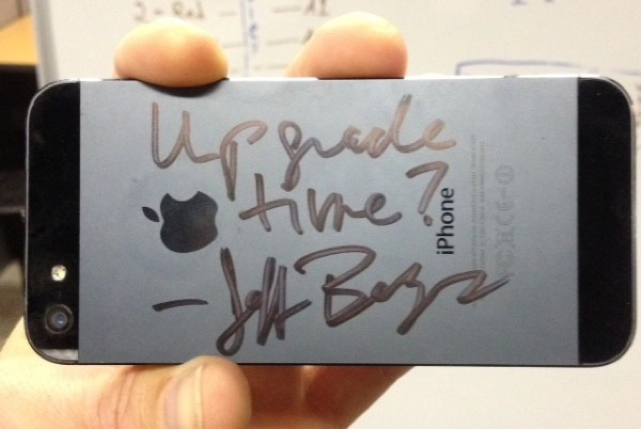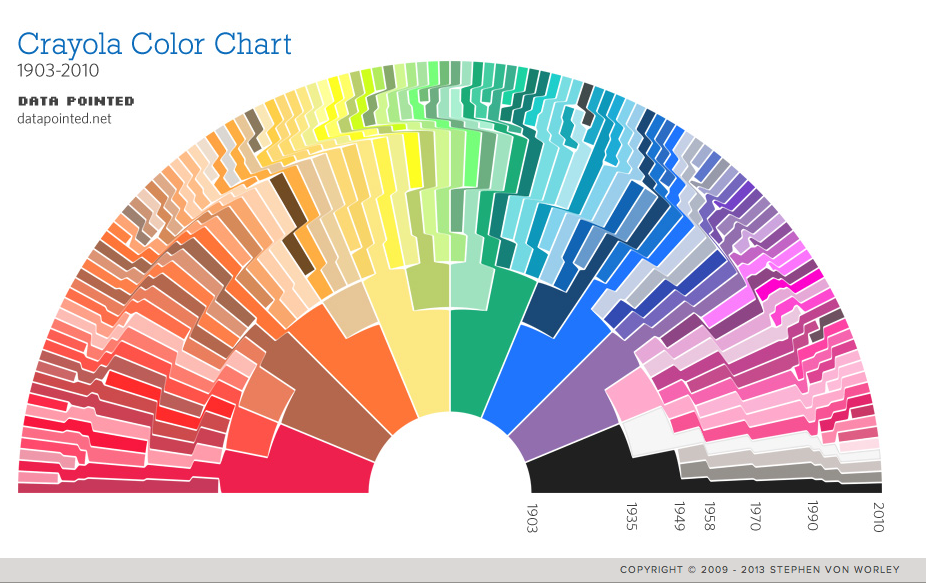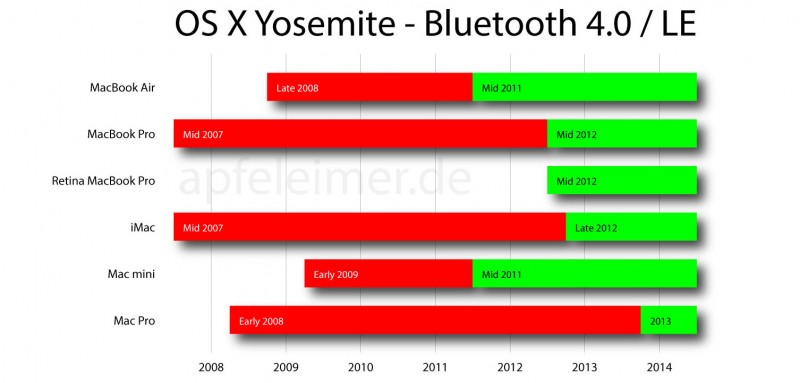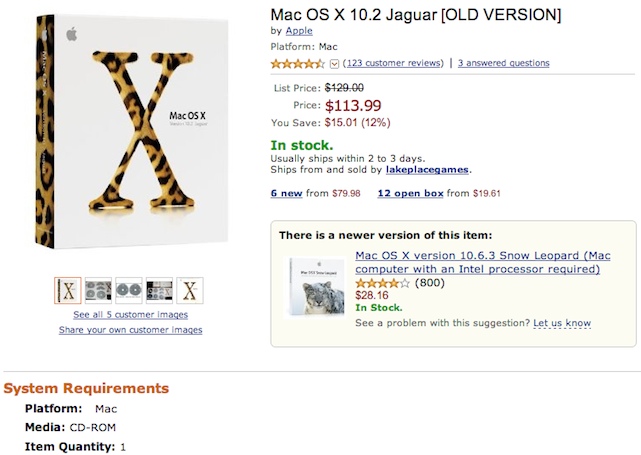1.
“Only Apple” has been Tim Cook’s closing mantra for the last few Apple keynotes. Here’s what he said at the end of last week’s WWDC keynote:
You’ve seen how our operating systems, devices, and services, all
work together in harmony. Together they provide an integrated and
continuous experience across all of our products, and you’ve seen
how developers can extend their experience further than they’ve ever done
before and how they can create powerful apps even faster and more
easily than they’ve ever been able to.
Apple engineers platforms, devices, and services together. We do
this so that we can create a seamless experience for our users
that is unparalleled in the industry. This is something only Apple
can do. You’ve seen a few people on stage this morning, but there
are thousands of people that made today possible.
Is this true, though? Is Apple the only company that can do this? I think it’s inarguable that they’re the only company that is doing it, but Cook is saying they’re the only company that can.
I’ve been thinking about this for two weeks. Who else is even a maybe? I’d say it’s a short list: Microsoft, Google, Amazon, and Samsung. And I’d divide that short list into halves — the close maybes (Microsoft and Google) and the not-so-close maybes (Amazon and Samsung).
Samsung makes and sells a ton of devices, but they don’t control any developer platform to speak of. They’re trying with Tizen, but that hasn’t taken off yet. So their phones and tablets run Android, their notebooks run Windows or Chrome OS, and there’s no integration layer connecting all the other stuff they make (TVs, refrigerators, whatever). I think Tizen exists because Samsung sees the competitive disadvantage they’re in by not controlling their software platforms, but they’re nowhere close to having something that helps them in this regard.
Amazon sells devices (including soon, purportedly, phones) and certainly understands cloud services and the integration of features under your Amazon identity. But their aims, thus far, are narrow. Amazon devices really are just about media consumption — books, movies, TV shows — and shopping from Amazon. They don’t make PCs, so compared to Apple and the growing integration between Macs and iOS devices, Amazon isn’t even in the game. And with their reliance on Android (forked version or not), they don’t have anywhere near the control over their software platforms that Apple does.
Google has all three: platforms, devices, and services. But the devices that are running their platforms are largely outside their control. They sell “pure Google” Nexus devices, but those devices haven’t made much of a dent in the market. Google’s mindset a decade ago was centered around web apps running in browsers. Google didn’t need its own platform because every PC had a browser and people would use those browsers to do everything Google provided in browser tabs. That meta-platform approach has limits, though, particularly when it comes to post-PC devices. Their stated reason for buying Android wasn’t because they wanted to design and control the post-PC device experience, but because they wanted an open mobile platform on which their web services could not be locked out.
Google’s aspirations for seamlessness largely, if not entirely, revolve around Google’s own apps and services. They’ve long offered tab sharing between Chrome on multiple devices — a cool feature, much in line with the Continuity features Apple debuted at WWDC. But if Google did something similar for email, it would only work with Gmail. Gmail on your phone to Gmail in a tab in Chrome on your PC. (On the other hand, Google’s solution would likely work from Gmail on your iPhone too; Apple (Beats excepted) offers bupkis for Android users.)
That leaves Microsoft. Here’s a tweet I wrote during the keynote, 20 minutes before Cook’s wrap-up:
Microsoft: one OS for all devices.
Apple: one continuous experience across all devices.
That tweet was massively popular,1 but I missed a word: across all Apple devices. Microsoft and Google are the ones who are more similarly focused. Microsoft wants you to run Windows on all your devices, from phones to tablets to PCs. Google wants you signed into Google services on all your devices, from phones to tablets to PCs.
Apple wants you to buy iPhones, iPads, and Macs. And if you don’t, you’re out in the cold.2
Apple, Google, and Microsoft each offer all three things: devices, services, and platforms. But each has a different starting point. With Apple it’s the device. With Microsoft it’s the platform. With Google it’s the services.
And thus all three companies can brag about things that only they can achieve. What Cook is arguing, and which I would say last week’s WWDC exemplified more so than at any point since the original iPhone in 2007, is that there are more advantages to Apple’s approach.
Or, better put, there are potentially more advantages to Apple’s approach, and Tim Cook seems maniacally focused on tapping into that potential.
2.
Apple’s device-centric approach provides them with control. There’s a long-standing and perhaps everlasting belief in the computer industry that hardware is destined for commoditization. At their cores, Microsoft and Google were founded on that belief — and they succeeded handsomely. Microsoft’s Windows empire was built atop commodity PC hardware. Google’s search empire was built atop web browsers running on any and all computers. (Google also made a huge bet on commodity hardware for their incredible back-end infrastructure. Google’s infrastructure is both massive and massively redundant — thousands and thousands of cheap hardware servers running custom software designed such that failure of individual machines is completely expected.)
This is probably the central axiom of the Church of Market Share — if hardware is destined for commoditization, then the only thing that matters is maximizing the share of devices running your OS (Microsoft) or using your online services (Google).
The entirety of Apple’s post-NeXT reunification success has been in defiance of that belief — that commoditization is inevitable, but won’t necessarily consume the entire market. It started with the iMac, and the notion that the design of computer hardware mattered. It carried through to the iPod, which faced predictions of imminent decline in the face of commodity music players all the way until it was cannibalized by the iPhone.
Apple suffered when they could not operate at large scale. When you go your own way, you need a critical mass to maintain momentum, to stay ahead of the commodity horde. To pick just one example: CPUs. Prior to the Mac’s switch to Intel processors in 2006, Macs were generally more expensive and slower than the Windows PCs they were competing against. There weren’t enough Macs being sold to keep Motorola or IBM interested in keeping the PowerPC competitive, and Apple didn’t have the means to do it itself. Compare that to today, where Apple can design its own custom SoC CPUs — which perform better than the commodity chips used by their competitors. That’s because Apple sells hundreds of millions of iOS devices per year. Apple’s commitment to making its own hardware provided necessary distinction while the company was relatively small. Now that the company is huge, it still provides them with distinction, but now also an enormous competitive edge that cannot be copied. You can copy Apple’s strategy, but you can’t copy their scale.
Microsoft and Google have enormous market share, but neither has control over the devices on which their platforms run. Samsung and Amazon control their own devices, but neither controls their OS at a fundamental level.
Microsoft and Google can’t force OEMs to make better computers and devices, to stop junking them up with unwanted add-ons. Apple, on the other hand, can force anything it can achieve into devices. Apple wants to go 64-bit on ARM? Apple can do it alone.
Let’s take a step back and consider Apple’s operational prowess. In their most recent holiday quarter, they sold 51 million iPhones and 26 million iPads. In and of itself that’s an operational achievement. But further complicating the logistical complexity: the best selling devices (iPhone 5S and 5C, iPad Air and the iPad Mini with Retina Display) had only just been released that quarter. iOS device sales skew toward the high-end, not the low end, because they’re not commodities. Brand new devices sold in record numbers. The single best selling and most important device was the iPhone 5S, with an all-new fingerprint sensor and camera. A secure enclave for the fingerprint data. Brand-new Apple-designed A7 processors — the first in the industry to go 64-bit. No one else is making 64-bit mobile CPUs and Apple sold tens of millions of them immediately. There are very few standard parts in these devices. Consider too that Apple has no way of knowing in advance which devices — and which colors of those devices — will prove the most popular.
But the whole quarter went off, operationally, pretty much without a hitch. Record unit sale numbers with fewer product shortages and delays than ever before. No one’s perfect — remember the white iPhone 4, which was announced in June 2010 but didn’t go on sale until April 2011? — but Apple is very, very good, and has been throughout the entire post-NeXT era.
Everyone knows that Tim Cook deserves credit for this operational success. Manufacturing, procurement, shipping, distribution, high profit margins — these are things we’ve long known Tim Cook excels at managing.
As the Cook era as Apple’s CEO unfolds, what we’re seeing is something we didn’t know, and I think few expected. Something I never even considered:
Tim Cook is improving Apple’s internal operational efficiency.
It has long been axiomatic that Apple is not the sort of company that could walk and chew gum at the same time. In 2007, they issued a (very Steve Jobs-sounding) press release that stated Mac OS X Leopard would be delayed five months because the iPhone consumed too many resources:
However, iPhone contains the most sophisticated software ever
shipped on a mobile device, and finishing it on time has not come
without a price — we had to borrow some key software engineering
and QA resources from our Mac OS X team, and as a result we will
not be able to release Leopard at our Worldwide Developers
Conference in early June as planned.
In response, Daniel Jalkut wrote:
The best we can hope for is that it is only sleazy marketing
bullshit. Because if what Apple’s telling us is true, then they’ve
confessed something tragic: they’re incapable of building more
than one amazing product at a time. The iPhone looks like it will
be an amazing product, but if Apple can’t keep an OS team focused
and operational at the same time as they keep a cell phone team
hacking away, then the company is destined for extremely rough
waters as it attempts to expand the scope of its product line.
Or consider the October 2010 “Back to the Mac” event, the entire point of which was to announce features and apps for the Mac that had started life on iOS years earlier.
That seems like ancient history, given the magnitude of the updates shown last week in both OS X Yosemite and iOS 8. All the things that make sense for both OS X and iOS are appearing together, this year, on both platforms. Everything from user-facing features like Extensions and Continuity to Swift, the new programming language. This requires more engineers working together across the company.
The same maestro who was able to coordinate the procurement, assembly, production, and shipment of 76 million all-new iPhones and iPads in one quarter has brought those operational instincts and unquenchable thirst for efficiency to coordinating a Cupertino that can produce major new releases of both iOS and OS X, with new features requiring cooperation and openness, in one year. They’re doing more not by changing their thousand-no’s-for-every-yes ratio, but by upping their capacity.
The turning point is clear. The headline of Apple’s October 2012 press release said it all: “Apple Announces Changes to Increase Collaboration Across Hardware, Software and Services”. It turns out that was not an empty bromide, meant to patch over run-of-the-mill corporate political conflict. Tim Cook wanted Apple to function internally in a way that was anathema to Scott Forstall’s leadership style. The old way involved fiefdoms, and Forstall’s fiefdom was iOS. The operational efficiency Cook wanted — and now seems to have achieved — wasn’t possible without large scale company-wide collaboration, and collaboration wasn’t possible with a fiefdom style of organization.
That also happens to be the same press release in which Apple announced the ouster of retail chief John Browett, whose ill-fated stint at the company lasted just a few short months. Browett is a footnote in Apple history, but I think an important one. Apple hired him from Dixon’s, a U.K. electronics retailer akin to Best Buy here in the U.S. In short, a nickel-and-dime operation where the customer experience is not the top priority. Browett thus struck many as a curious choice for the head of Apple retail.
Browett’s hiring and the resulting failure of his tenure at Apple raised a legitimate fear: that this was a sign of things to come. This — penny-pinching and prioritizing the bottom line, losing sight of excellence in the eyes of the customer as the primary purpose of the Apple Stores — this, is what happens when the “operations guy” takes over the helm.
Ends up, we should have no such worries. My guess is that it’s as simple as Cook having thought that there were operational improvements to be had in retail, and so he hired an operationally minded retail executive. He didn’t understand then what Angela Ahrendts’s hiring shows that he clearly does understand now: that Apple’s retail stores need to be treated much like Apple’s products themselves, and thus require the same style of leadership.
During the keynote last week, John Siracusa referenced The Godfather, quipping:
Today Tim settles all family business.
I’d say it’s more that Cook settled the family business back in October 2012. Last week’s keynote was when we, on the outside, finally saw the results. Apple today is firing on all cylinders. That’s a cliché but an apt one. Cook saw untapped potential in a company hampered by silos.
When Cook succeeded Jobs, the question we all asked was more or less binary: Would Apple decline without Steve Jobs? What seems to have gone largely unconsidered is whether Apple would thrive with Cook at the helm, achieving things the company wasn’t able to do under the leadership of the autocratic and mercurial Jobs.3
Jobs was a great CEO for leading Apple to become big. But Cook is a great CEO for leading Apple now that it is big, to allow the company to take advantage of its size and success. Matt Drance said it, and so will I: What we saw last week at WWDC 2014 would not have happened under Steve Jobs.
This is not to say Apple is better off without Steve Jobs. But I do think it’s becoming clear that the company, today, might be better off with Tim Cook as CEO. If Jobs were still with us, his ideal role today might be that of an éminence grise, muse and partner to Jony Ive in the design of new products, and of course public presenter extraordinaire. Chairman of the board, with Cook as CEO, running the company much as he actually is today.
3.
This is what only Apple can do:
Software updates that are free of charge and so easily installed that the majority of iOS and Mac users are running the latest versions of the OSes (a supermajority in the case of iOS). Apple can release new features and expect most users to have them within a year — and third-party developers can count on the same thing.
Hardware that is designed hand-in-hand with the software, giving us things like the iPhone 5S fingerprint scanner and the secure enclave, which requires support from both the operating system and the SoC at the lowest levels. And now Metal — custom graphics APIs designed specifically and solely for Apple’s own GPUs. A custom graphic API to replace an industry standard like OpenGL would have been a hard sell for Apple a decade ago, because the Mac market was so relatively small. Microsoft could do it (with DirectX) because of the size of the Windows gaming market. Now, with iOS, Apple already has the makers of four popular gaming engines on board with Metal.
Tim Cook has stated publicly that new products are in the pipeline, and he seems confident regarding them (as do other Apple executives). We can’t judge them yet, but consider this: Recall again that in 2007 Apple was forced to admit publicly that they had to pull engineering, design, and QA resources from the Mac in order to ship the iPhone. This year, new products are coming and but iOS and Mac development not only did not halt or slow, it sped up. In recent years, the company grew from being bad at walking and chewing gum to being OK at it, and most of us thought, “Finally”. But that wasn’t the end of the progression. Apple has proceeded from being OK at walking and chewing gum to being good at it. Thus the collective reaction to last week’s keynote: “Whoa.”
And the whole combination — hardware, software, services — is gearing up in a way that seems to be just waiting for additional products to join them. The iPhone in 2007 was connected to the Mac only through iTunes and a USB cable. Part of what made the iPhone a surprise in 2007 is that Apple clearly was in no position to add a new platform that harmonized seamlessly with Mac OS X. Today, they are.
4.
Last week generated much talk of this being a “New Apple”. Something tangible has changed, but I don’t see it in terms of old/new. As Eddy Cue told Walt Mossberg two weeks ago, there was a transition, not a reset.
There is an Old Apple and a New Apple, but the division between them — the one actual reset — was 1997, with the reunification with NeXT. Old Apple was everything prior. New Apple is everything since.
New Apple didn’t need a reset. New Apple needed to grow up. To stop behaving like an insular underdog on the margins and start acting like the industry leader and cultural force it so clearly has become.
Apple has never been more successful, powerful, or influential than it is today. They’ve thus never been in a better position to succumb to their worst instincts and act imperiously and capriciously.
Instead, they’ve begun to act more magnanimously. They’ve given third-party developers more of what we have been asking for than ever before, including things we never thought they’d do. Panic’s Cabel Sasser tweeted:
My 2¢: for the past few years it’s felt like Apple’s only goal was
to put us in our place. Now it feels like they might want to be
friends.
It’s downright thrilling that this is coming from Apple in a position of strength, not weakness. I’m impressed not just by what Apple can do, but by what it wants to do.


 Amazon is going all-in with its iPhone competitor, the Fire Phone, and company CEO Jeff Bezos took the time to have some fun with one of Apple's devices after revealing his new gadget at its debut event last week. A few of Amazon's biggest fans were...
Amazon is going all-in with its iPhone competitor, the Fire Phone, and company CEO Jeff Bezos took the time to have some fun with one of Apple's devices after revealing his new gadget at its debut event last week. A few of Amazon's biggest fans were...

 There's a lot of talk these days about ways to prevent smartphone theft. The iPhone's kill switch feature seems to be doing a pretty good job of curbing iPhone thefts, and that's definitely a good thing, but I have a feeling this creepy case from...
There's a lot of talk these days about ways to prevent smartphone theft. The iPhone's kill switch feature seems to be doing a pretty good job of curbing iPhone thefts, and that's definitely a good thing, but I have a feeling this creepy case from...









 If you stumble around on Amazon, you'll find that you can still purchase old Apple software that's well over a decade old. Take OS X 10.2 Jaguar, for example. Originally released in August of 2002, you can still purchase this bad boy for just $113.99...
If you stumble around on Amazon, you'll find that you can still purchase old Apple software that's well over a decade old. Take OS X 10.2 Jaguar, for example. Originally released in August of 2002, you can still purchase this bad boy for just $113.99...




